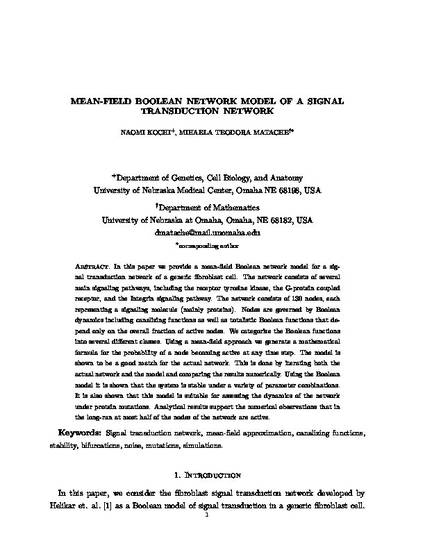
In this paper we provide a mean-field Boolean network model for a signal transduction network of a generic fibroblast cell. The network consists of several main signaling pathways, including the receptor tyrosine kinase, the G-protein coupled receptor, and the Integrin signaling pathway. The network consists of 130 nodes, each representing a signaling molecule (mainly proteins). Nodes are governed by Boolean dynamics including canalizing functions as well as totalistic Boolean functions that depend only on the overall fraction of active nodes. We categorize the Boolean functions into several different classes. Using a mean-field approach we generate a mathematical formula for the probability of a node becoming active at any time step. The model is shown to be a good match for the actual network. This is done by iterating both the actual network and the model and comparing the results numerically. Using the Boolean model it is shown that the system is stable under a variety of parameter combinations. It is also shown that this model is suitable for assessing the dynamics of the network under protein mutations. Analytical results support the numerical observations that in the long-run at most half of the nodes of the network are active.
Available at: http://works.bepress.com/mihaela-velcsov/14/

This article was originally published here: http://www.sciencedirect.com/science/article/pii/S0303264711002024.
© 2012. This manuscript version is made available under the CC-BY-NC-ND 4.0 licensehttp://creativecommons.org/licenses/by-nc-nd/4.0/